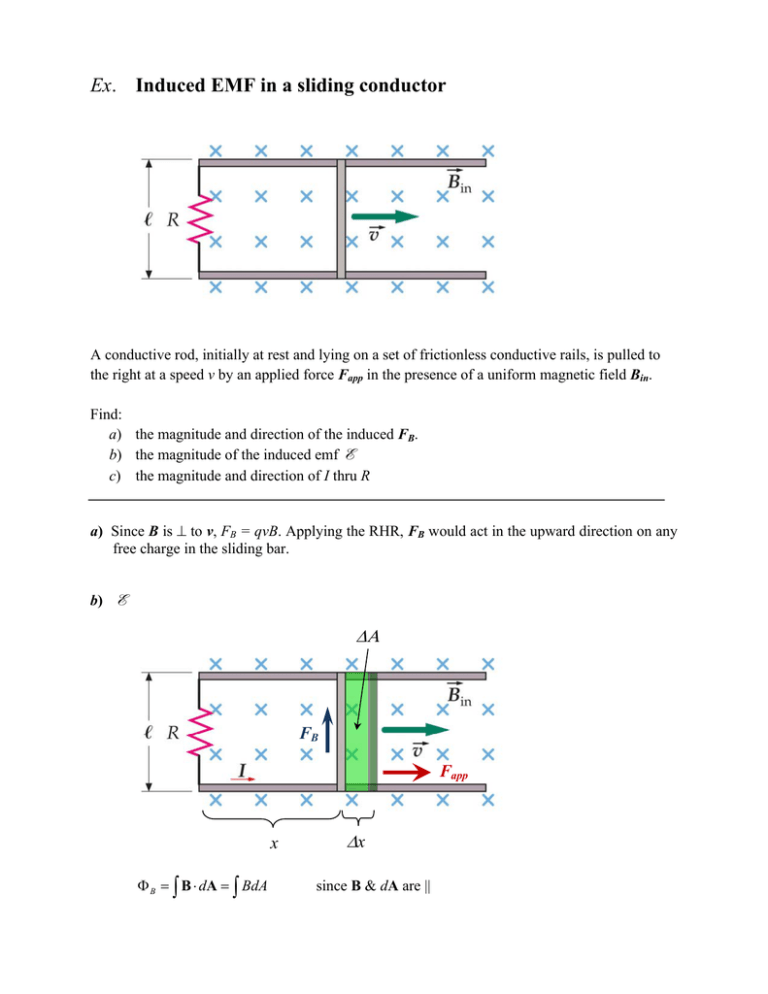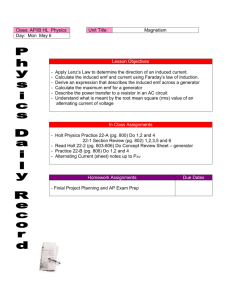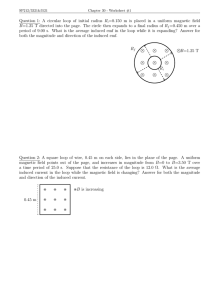Induced emf in a sliding conductor
advertisement

Ex. Induced EMF in a sliding conductor A conductive rod, initially at rest and lying on a set of frictionless conductive rails, is pulled to the right at a speed v by an applied force Fapp in the presence of a uniform magnetic field Bin. Find: a) the magnitude and direction of the induced FB. b) the magnitude of the induced emf E c) the magnitude and direction of I thru R a) Since B is ⊥ to v, FB = qvB. Applying the RHR, FB would act in the upward direction on any free charge in the sliding bar. b) E ΔΑ FB Fapp x Φ B = ∫ B ⋅ dA = ∫ BdA Δx since B & dA are || Î d Φ B = BdA Using dx = vdt , dA = dxl = vldt From Faraday’s Law, E =− dΦB dt E =− Bvldt dt E = − Blv E is negative because it is trying to restore the initial flux of the system. As the bar slides to the right, the flux thru the loop is increasing. The induced emf is formed to counter the increase. c) Since FB is in the upward direction and free charges are allowed to move from the bar thru the rails, a CCW current will flow thru the loop. The direction for I could also be established by from part b). Since the emf is negative, the corresponding induced B field would be out of the page to try and counter in increase in Bin thru the loop. The direction a current would have to flow thru the loop in order to produce an induced B out of the page would be in the CCW direction. The magnitude if I is given by: I= I= E R Blv R




